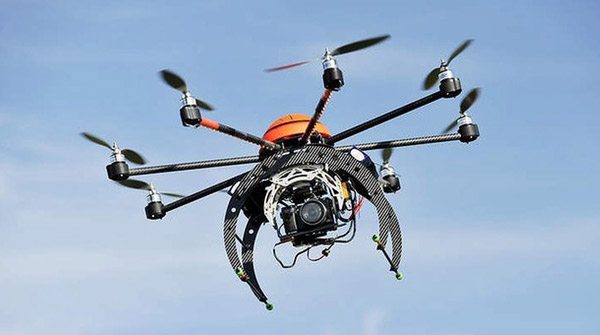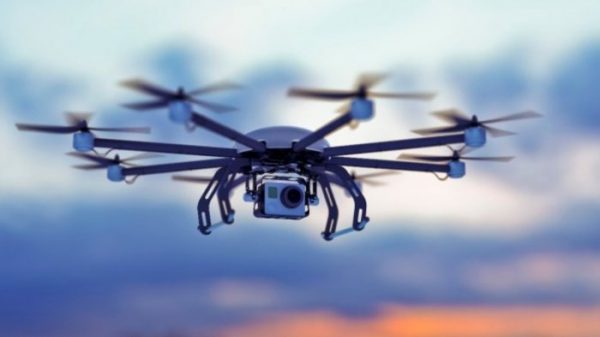Key takeaways:
- The government lacks the power to frame these rules to regulate digital media under the Information Technology Act.
- These rules infringe upon the right to free speech and the functioning of the independence of media platforms.
- The Rules being subordinate legislation have gone beyond the scope of the IT Act – the parent act, and define and deal with entities that the Act was never meant for, such as news aggregators and Publishers.
- Section 69A of the IT Act is meant for intermediaries but the Rules have widened its scope to include Publishers as well.
- There is no legal definition of news. Courts look at how news is understood in common parlance and how the dictionary understands and uses it.
- The question remains open as to whether specialised publications will come under these Rules or not
- The Rules act as a second Appellate Authority through the third level of the grievance redressal mechanism
- The Ethics Code under the Rules suffers from the same vagueness and overbreadth as Section 66(a) of the IT Act which was struck down by the Supreme Court in the Shreya Singhal case.
The new Information Technology (IT) Rules, 2021 mandate digital news publishers to form a three-tier regulatory structure and form self-regulatory organisations. The Interdepartmental Committee at the third level of grievance redressal has powers to issue direct orders to media organisations to take down content on receiving a complaint.
In a panel discussion held by MediaNama on the impact of IT Rules, 2021 experts shared their views on how the new Rules will impact news in India, and what it means for digital media organisations. The panellists included Abhinandan Sekhri (Newslaundry), Kawaljit Singh Bedi (NDTV), Koreel Lahiri (Media Development Investment Fund), Manu Sebastian (Live Law) and Neha Chaudhari (Ikigai Law).
Webnyay and Centre for Internet & Society were our community partners and the discussion was supported by Google. All quotes have been edited for clarity and brevity.
Constitutionality of the IT Rules, 2021
LiveLaw says rules are illegal and unconstitutional: “These Rules, on the face of it, are illegal and unconstitutional. If you go by the framework of the rules, these rules are issued by the government, exercising the powers under the Information Technology act.” – Manu Sebastian
The statute (IT Act, 2000) is not meant to control digital media as well as online Publishers, Sebastian pointed out. “They (government) say that the rules have been framed under Sections 69 and 79 and the general rulemaking power under Section 87, etc. So, this is the fundamental problem with the rules – the government lacks the authority to control digital media by using the powers under the Information Technology Act,” argued Sebastian.
These rules infringe upon the right to free speech and the functioning of the independence of media platforms: “So when we read the rules and so when we (LiveLaw) had a discussion, it was clear to us that these rules are violating any statutory provisions, many fundamental principles of law and also infringing the fundamental media freedom,” said Sebastian. Live Law has challenged the rules before the Kerala High Court and an interim order has been passed in their favour, granting them protection against any cohesive action under Part 3 of the Rules.
Subordinate legislation has to confine itself within the boundaries of the parent act: Sebastian argued that “subordinate legislation has to confine itself within the boundaries of the parent act, the main statute. So the IT rules cannot travel beyond the scope of the Information Technology Act.” If the IT Act does not deal with or if it is not meant to deal with news aggregators and publishers etc., then suddenly the subordinate legislation cannot define or cannot deal with those entities which are not meant to be covered by the parent act, he explained. And if such advisability is made that will be ultra vires the parent act and in fact, that is one of our main grounds in the petition, he added.
Reasonableness of restrictions
Do these rules pass the test of reasonableness? “When we talk about the reasonableness of restrictions, we always have to keep in mind the doctrine of proportionality, whether these restrictions are proportionate enough – that is the main test constitutionally”, affirmed Sebastian. He clarified that nobody is saying that online media platforms should have a special immunity, or they should be given free rein to do whatever they want.
“Of course, there should be some regulation, content should be responsible, there should be responsible reporting in accordance with all the laws of the land, no one is disputing that. But we are concerned about the scheme of oversight mechanism which has been created under the Act and which has a disproportionate impact”, he said.
By way of an example, Sebastian thought of a situation where, if a complaint was filed against a report by LiveLaw, saying that their report is fabricated or fake news and they were the only ones reporting it, then who will be the ones verifying it? It would be an arm of the government itself, which in this case would be a vested party, he said. Another situation that may arise is that if it’s an organization, which is not in the good books of the government, it can immediately take adverse action. “And there is no means to verify or no means to prove your point because basically, the government itself is acting as the judge and executioner”, said Sebastian.
Applicability of Section 69A, IT Act to news publishers
69 A is only for intermediaries: Chaudhari answered “69A is meant to apply to intermediaries. And I think the rules widen that to include Publishers as well. So I think to that extent, you’re going to have issues with constitutionality. But if it’s a question of just content, can it apply to news content? And then I think the provision of law is wide enough to allow for that.” The problem according to her seems to be that Publishers have also been included in the Rules. This means that the government can direct blocking orders, essentially takedown orders, towards publishers as well.
Who gets impacted by the Rules?
No legal definition of news: One challenge with the Rules is that news isn’t defined. This leads to a complication for specialist media publications, who aren’t able to ascertain whether they are covered by the Rules or not.
How is “news” defined in law? How do you legally define news? Chaudhari gave some perspective on this: As far as the law goes, there is no legal definition of news. So what the courts have done, including the Supreme Court, is to look at how the dictionary understands and uses the terms news.
“Given that there is a literal definition of news and that’s the one that you go by, where it’s about new information, new events, recent events, something that recently happened or helping people make sense of what’s recently happened,” she elaborated. Just the way you and I would understand news is the way law would understand the news, Chaudhari added.
Definition of news in the Rules sounds recursive: Clause 2(m) of the rules say that news and current affairs content includes newly received or noteworthy content including analysis, especially what recent events, primarily of socio-political-economic or cultural nature made available over the Internet or computer networks and in any digital media shall be news and current affairs with a content substance, purpose, import and meaning of such information is in the nature of news and current affairs content. Doesn’t it sound like a recursive definition?
Chaudhari agreed that it does: “This is where we have no understanding of what a common person understands to be news, and likewise for current affairs because these are not terms that have been defined statutorily. So in the absence of the statute, you have to look at everyday understanding.”
Will specialised publications fall under these Rules? Sebastian informed that during the hearing, the Kerala High Court had a query as to whether portals such as LiveLaw will be brought under these Rules. The HC observed that LiveLaw was essentially doing reporting of courtroom proceedings, courtroom exchanges and judgments and other analysis of the judicial developments. So the Bench wanted to know how such a portal could be brought under the purview of the rules. Subsequently, an interim order was passed in their favour.
Nothing in the law that says the publication has to be of a particular nature: Chaudhari explained “it doesn’t say if you’re super-specialized, then it can be kept out of the definition of news, where we’re thinking about this, just in terms of being traditional media. “The law is not telling you any of these different things. You are saying if it’s news, that’s of public importance. Now, who’s to say what is the public importance?” added Chaudhari.
What about the impact on websites like Cricinfo, Exchange4media, or a podcast like ‘Seen and Unseen’ by Amit Verma that discusses politics and so much more? Chaudhari distinguished between news and websites, and podcasts or blogs or forums on the basis of what their primary purpose was. “This all just becomes a question of fact. The definition itself is super wide. The news means tidings, new information of recent events, new occurrences as a subject of report or talk; News means information, intelligence, knowledge and is generally understood as a report of recent occurrences reports of happenings of recent occurrences of varied characters, such as political social, moral religious, so on, and so forth.” she explained.
Chaudhari’s contention was that the definition of news itself is so wide that each of the cases, whether it’s Cricinfo, Exchange4Media or even a real estate portal’s blog with real estate news, will on the face of it be categorised as news but will have to be dealt with in-depth on a case-to-case basis, to decide whether they can be categorised as a news website or not.
Consequences of actions under the Press Council Act’s Code of Conduct and those under the IT Rules
Challenge to the Rules on grounds of vagueness and overbreadth: The rules might be challenged on the basis of being vaguely worded like section 66(a) of the IT Act but such norms have applied to both print as well as TV for a long time.
“The journalistic code under the Press Council Act and as well as The Programme Code are also very subjective, as they have expressions like ‘not in good taste’ or ‘half-truths’ etc. And this was the exact reason why the Supreme Court struck down Section 66(a) in the Shreya Singhal case. I believe that even the Programme Code had a case to be challenged in the Supreme Court. I don’t know why it was not taken up. I’m not commenting on that but it is my firm belief that even the Code which has been made applicable to the digital media as well suffers from the same problem of vagueness and overbreadth.” – Manu Sebastian
“Even so, going by the structure of the Press Council Act, even if there is any violation of the Journalistic Code of Ethics under the Press Council act, there is no legal or any penal cohesive action,” Sebastian noted. When compared with the IT rules, one can see that the consequences are very grim. “I mean, they can basically shut down your platform eventually by gradual action. So you have to keep in mind the consequences as well when we compare both these aspects,” urged Sebastian.
Sekhri added to this saying, “You can’t let the cancer of vague wording spread. it should be shrunk.”
Committee functioning as a tribunal with adjudicatory powers
Constitution of the Interdepartmental Committee – whether it’s a quasi-judicial body or a kind of tribunal: Can administrative tribunals be set up through Rules?
Sebastian discussed the structure of the Interdepartmental Committee and affirmed that it indeed acts as a second Appellate Authority for the grievance control mechanism of the media. The Committee has also got suo motu powers to issue blocking orders under extraordinary circumstances. “It is kind of acting like a tribunal as it has got powers of adjudication as well as execution, and is also receiving complaints on its own. This is one area of concern – that it’s acting like a tribunal. It acts like an Adjudicatory body while being part of the executive itself, and has been created through executive rulemaking, not through any legislation or any parliamentary process.”
Such a mechanism cannot be created through executive rulemaking: Sebastian argued that such an authority must be established through a parliamentary process after discussion, and should be derived from a statutory framework.
PCI as an alternative structure to regulate the third level authority for grievance redressal: Sebastian was not too thrilled by that proposition. He was of the view that the stands taken by PCI, have been very pro-establishment recently. “So we need to have a clearly independent agency for regulating media, just as all over the world, the model has been of self-regulation. I have my reservations about PCI in that regard,” he concluded.





























